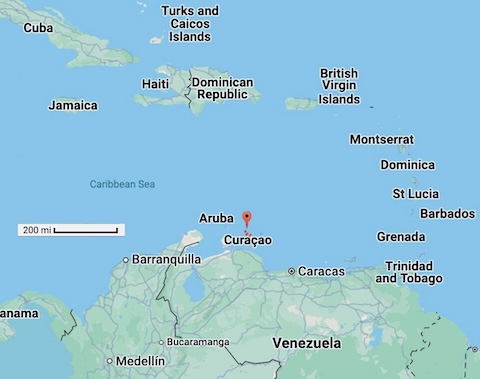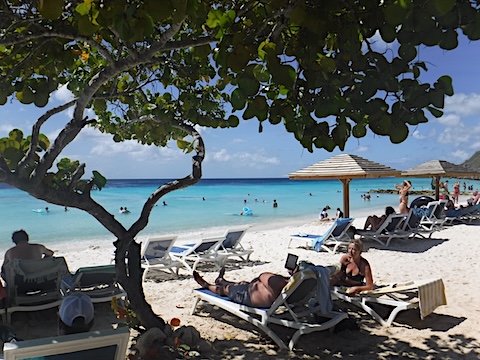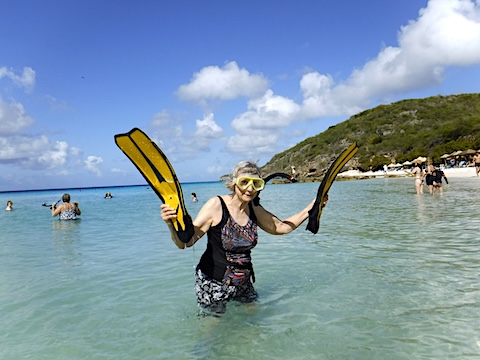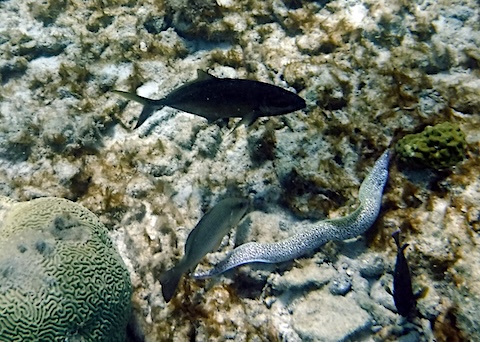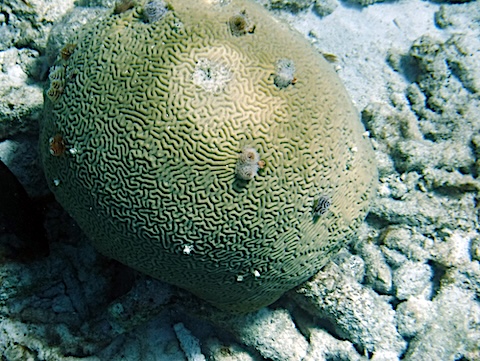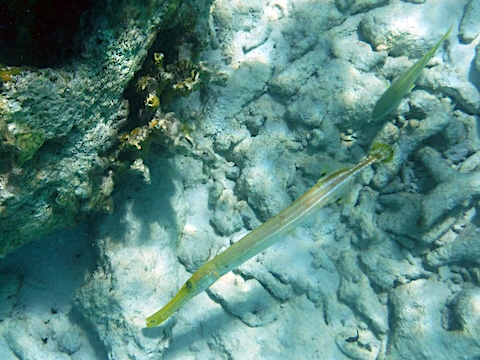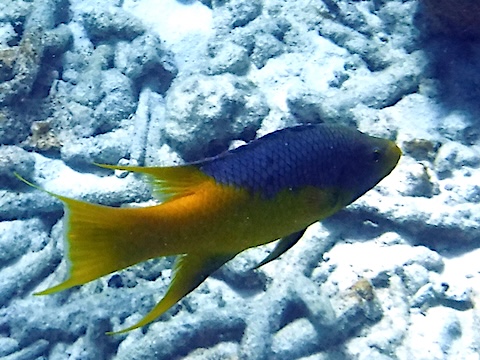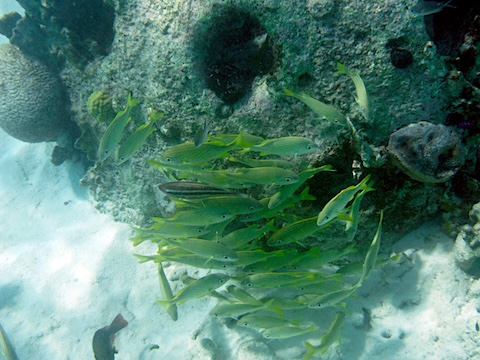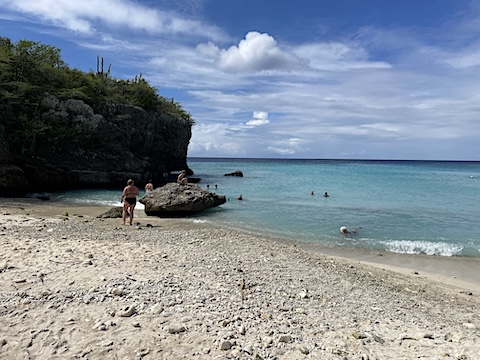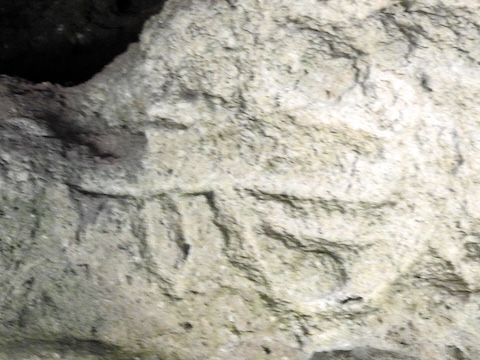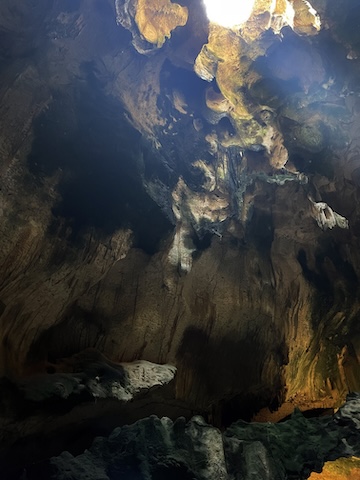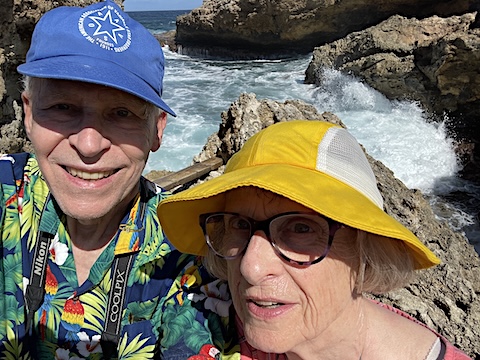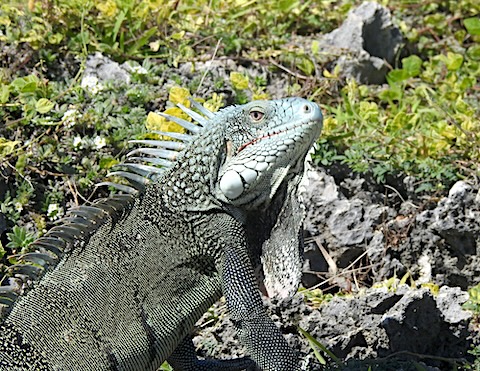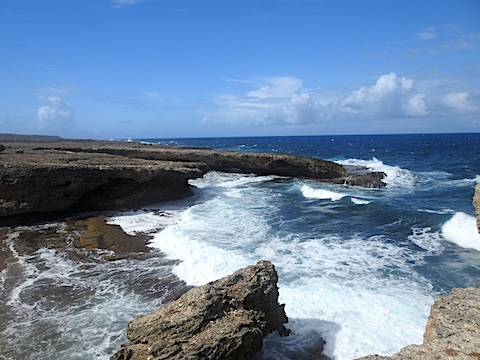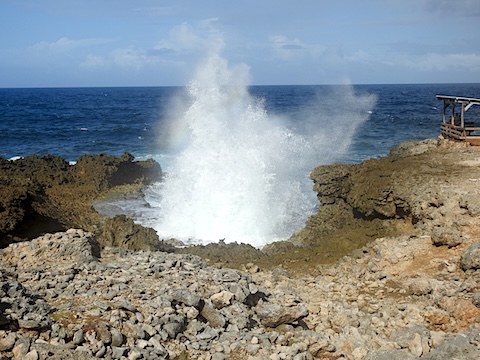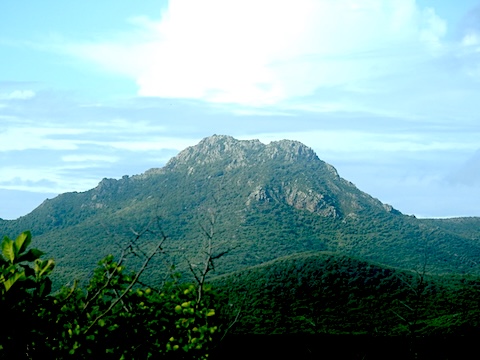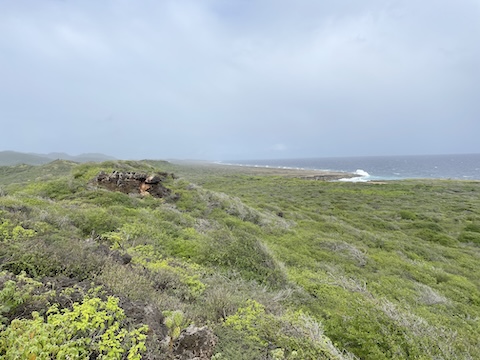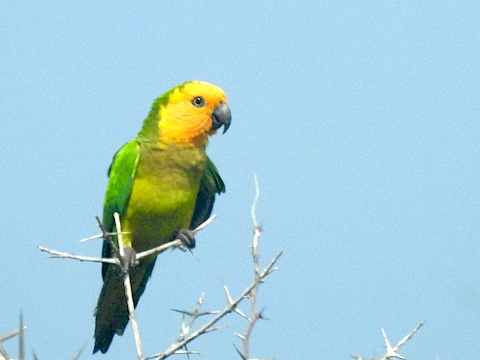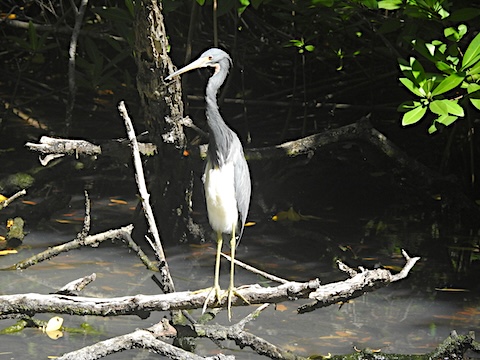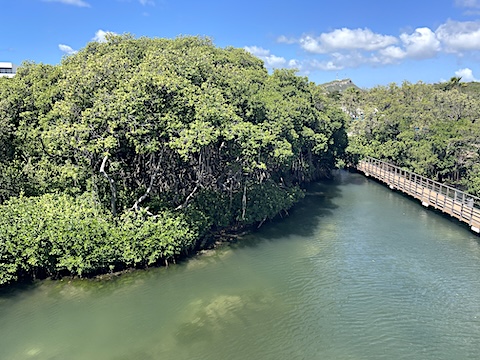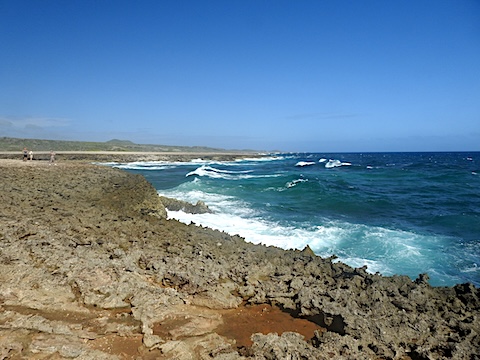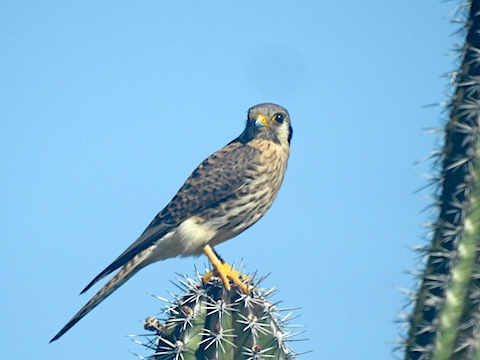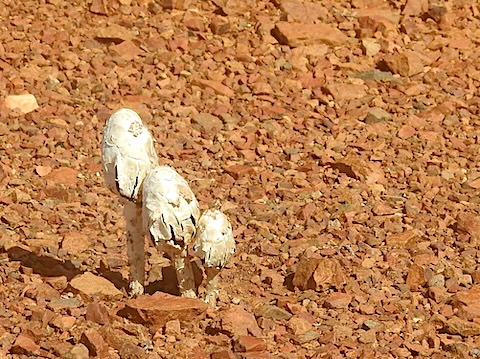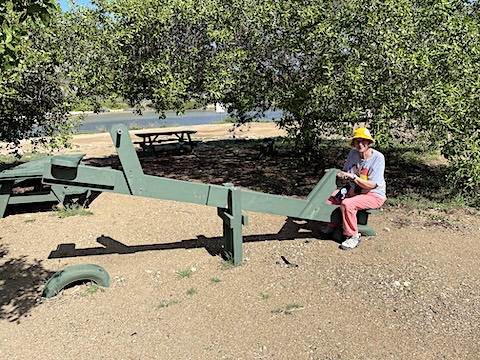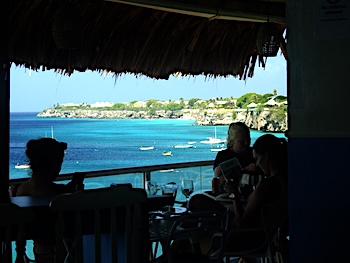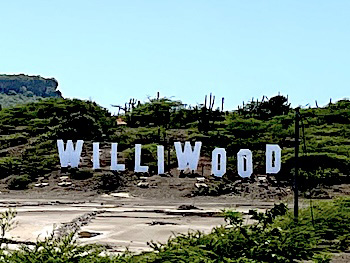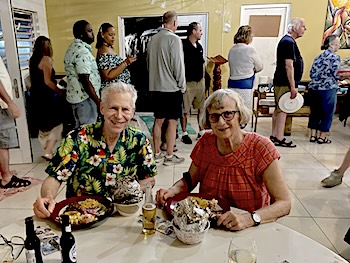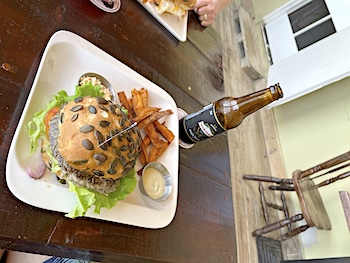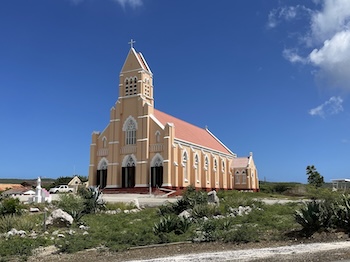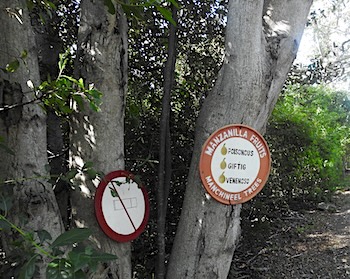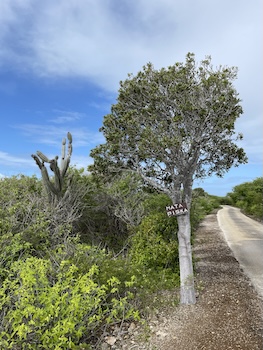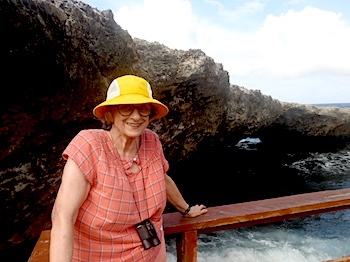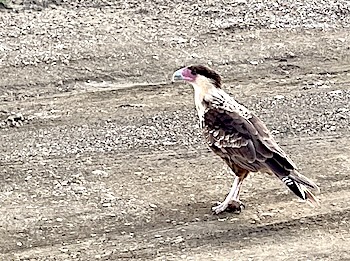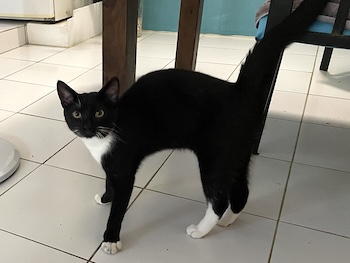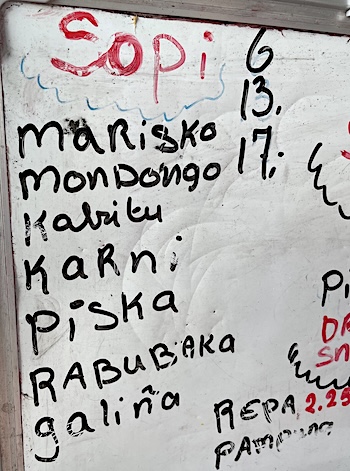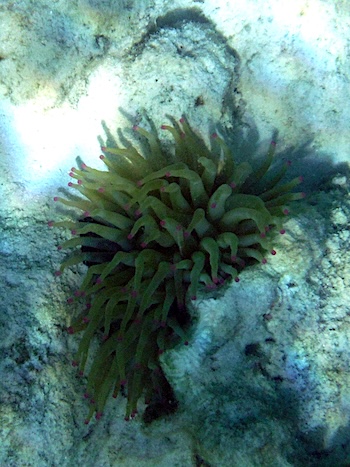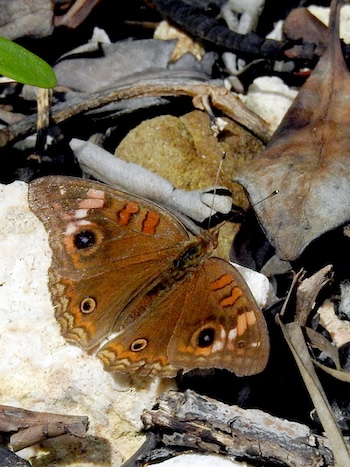|
PARKS
We visited Hato Cave, Shete Boka National Park, Christoffel National Park,
Mangrove Park, and Ascencion Park.
Hato Cave is an ordinary cave with stalactites, stalagmiters, columns, and shallow pools
of water located on a, for us, exotic Caribbean island. It is located in a
cliff that had been the shoreline when the seas were much higher. One room had
stretched so close to the surface that a huge boulder had fallen out of the roof,
leaving a window to the sky.
The cave was only a few hundred feet from our hotel. It was the first sightseeing
destination we visited after getting our rental car.
We even had a lunch of empanadas from the snack bar there.
Shete Boka (Seven Mouths or Inlets) National Park is located on the east coast
where constant, strong winds drive
waves against the cliffs of the rocky shoreline.
There is no swimming or snorkeling at this park.
The cliffs are interrupted by an occasional inlet in which the wave activity is scenic.
I expected that a visit to Christoffel National Park would be the highlight
of our vacation, but it wasn’t.
The park is divided into two parcels by the Weg Naar Westpunt, the main highway in
the northern part of the island.
The parcel west of the highway contains the craggy, 1,220-foot-high Mount Cristoffel
and its highlands.
East of the highway are rocky hills, a seasonal pond, lots of thorny plants
and cacti, and the wave-beaten coast.
On the day we visited, the Mount Christoffel parcel was closed because overnight
rains had made the steep roads too slippery.
We drove through the coastal parcel on roads that were paved, but some of the hills were
pretty steep. We climbed to a hilltop observation platform and stopped along the road
to see birds. After driving the circuit, we visited the park’s Savonet Museum,
which featured exhibits of life in this historic manor house.
We weren’t sure what we’d find at the Mangrove Park. Close to the center of
Willemstad, it was recovered land that had once been a location where
sewage was discharged.
It was not mentioned in the two pieces of tourist information we possessed,
but a woman at the Toruist Bureau had told us about it.
It was nice. We mostly had the place to ourselves.
Some people came through on a kayak tour, but we walked the boardwalk.
We saw herons, parakeets, and other
birds, several butterflies, a barracuda looking for lunch, and other creatures.
Boka Ascension is the location of a small community park. To get it to, we drove
a single-track, dirt road that occasionally dipped into scary looking puddles.
We did not get stuck, despite appearances.
Our hostess, Susanne, told us about the park or we never would have been aware of it.
This boka was larger than those in Shete Boka and was populated by herons, egrets, and
pelicans.
There was a small picnic area and some paths worn by people walking.
CULTURE
|
In Willemstad, the capital, we wandered the tourist area on one afternoon, and
visited the Mikve Israel-Emanuel Synagogue and the
Kura Hulanda Museum
on another.
Jews begaj coming to Curaçao in the 1500s to escape persecution in Spain.
Jews on Curaçao helped establish the Jewish congregation in New Amsterdam
in the 1600s.
The Mikve Israel-Emanuel Synagogue, consecrated in 1732, is the oldest synagogue in
continuous use in the Americas.
The Kura Hulanda Museum celebrates the African origins of many of the citizens of
Curaçao. There are rooms devoted to the implements of slavery, masks, and
art including Benin bronzes.
The rooms of the museum are arranged around a courtyard featuring a large statue of a head.
From the front, the statue shows a face. From the side, the back shows the outline of the
coast of West Africa.
Cruise ships docked at Willemstad. Tour buses, some large, modern and aid-conditioned and
others quaint, open-air and colorfully painted,
carried the ships’s passengers to the beaches and parks.
|
Colorful buildings along the shipping channel in Willemstad
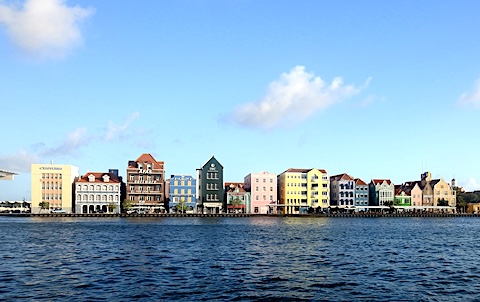
|
Chichi sculpture, Big Love and Big Care, in Willemstad
|
At the Love Hearts sculpture by the shipping channel in Willemstad
|
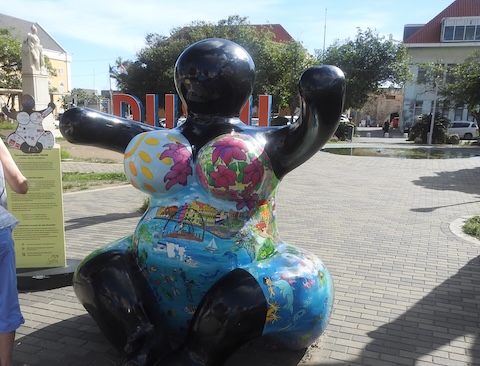
|
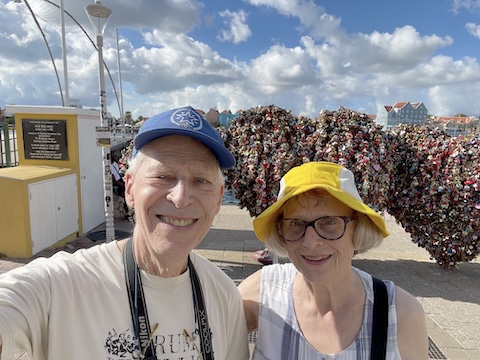
|
Queen Emma Pontoon Bridge across the shipping channel
|
Defending Willemstad against Spanish pirates?
|
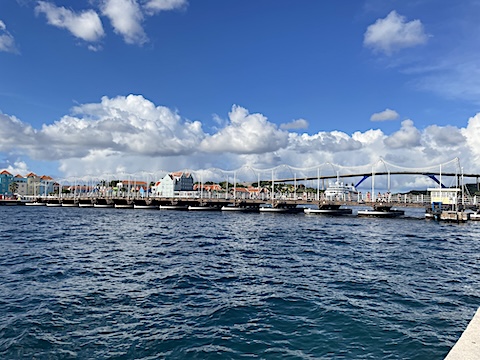
|
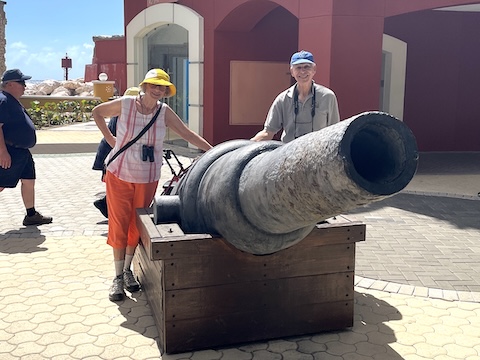
|
Gail in the Synagogue Mikve Israel-Emanuel
|
Synagogue interior
|
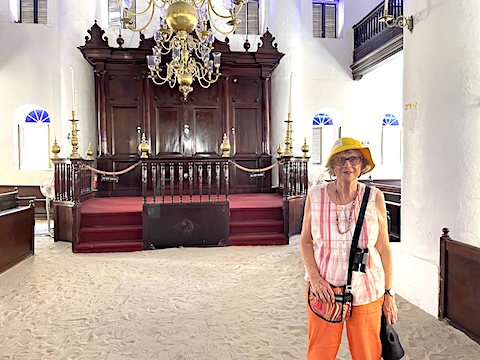
|
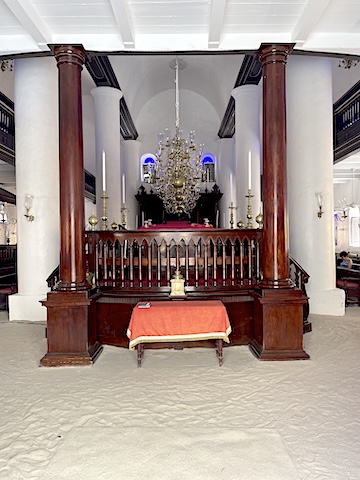
|
Face of statue in the courtyard of the Kura Hulanda Museum
|
Side of the museum’s statue showing the west coast of Africa
|
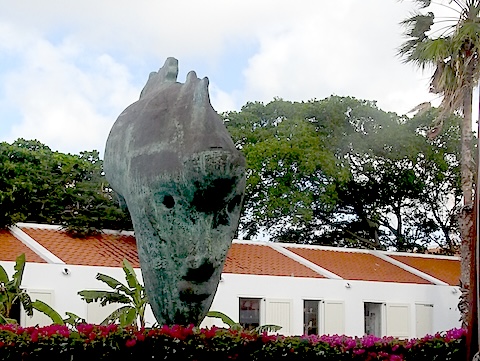
|
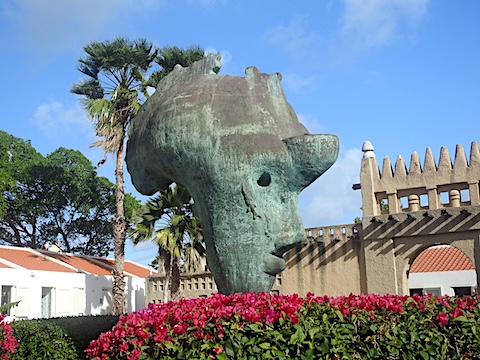
|
LODGING CHAOS
As soon as we’d decided to visit Curaçao in late October,
I made a reservation with Vbro for a place to stay.
The apartment which was located near the little crossroads of Bisento
seemed to have all the features we needed.
However, by the Sunday before our scheduled Wednesday arrival,
I had not received any
detailed information about the address and how to access the apartment.
Therefore, on Monday morning
I got in touch with Vbro and asked for help. The help person gave me a phone number
for the owner.
I called the number on the island of Sint Maarten multiple times, but no one answered.
Then, as an emergency back up, I reserved a room for us at the Curaçao Airport Hotel for
Wednesday and Thursday night.
I contacted Vrbo again on Tuesday morning. The person there used another phone number
to get in touch with the owner. It turned out that the apartment was no longer
available because of construction. I would have to find another place for us to stay
within 24 hours.
On the positive side, if I found a place that cost more than my original reservation,
Vrbo would subsidize the additional amount up to the original cost.
So there we were, leaving the next day and no apartment to stay in. I found another
apartment in Grote Berg which closer to Willemstad. I put a deposit on it and waited to
hear whether my offer was accepted.
Wednesday morning, we still had not heard back about the Grote Berg apartment when
we boarded the plane.
When we changed planes in Miami, I learned that my request had been rejected!
Fortunately, we had the reservations at the hotel for Wednesday and Thursday night
so we would not have to sleep on the street.
When we arrived in Curaçao, I immediately looked for an apartment to take us
from Friday, January 17, until we planned to leave on Monday, January 27.
I found one in the village of Barber and put in a reservation request for it.
The request was immediately accepted.
Hooray!
We were lucky to find this apartment.
The owners Susanne and Peter, Germans who had lived in Curaçao 17 years, were great hosts.
Susanne provided flowers, Peter made us chocolate cake, and both shared advice when requested.
Susanne even washed our laundry for us.
Moreover, the location was great for us.
The beaches of the Middle West Coast and West End were only a short drive away.
Christoffel National Park and Shete Boca National Park were conveniently up the main highway.
We found all our food and other needs at the village’s Sunshine Market.
Above all, it wasn’t in the city and it wasn’t a resort where you only meet people
like yourself. There were plenty of roosters and dogs in the neighborhood, but Susanne
and Peter’s little kitty was our friend.
The apartment had a small kitchen, an open design, and even WiFi.
Every Sunday there is a food fair in Barber so we got to sample the kinds of foods
eaten by the locals.
Gail relaxing on our patio
|
The sleeping and dining areas of our apartment
|
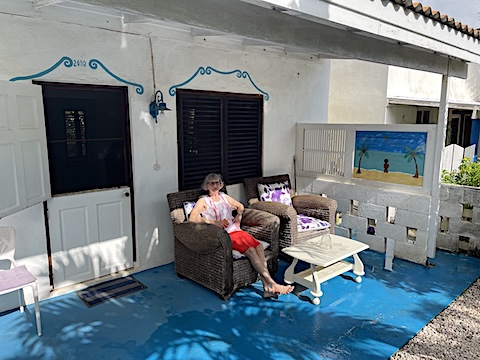
|
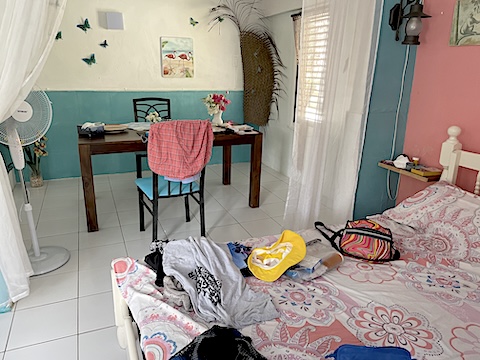
|
Barber can be seen under the wing, near the far side of the island
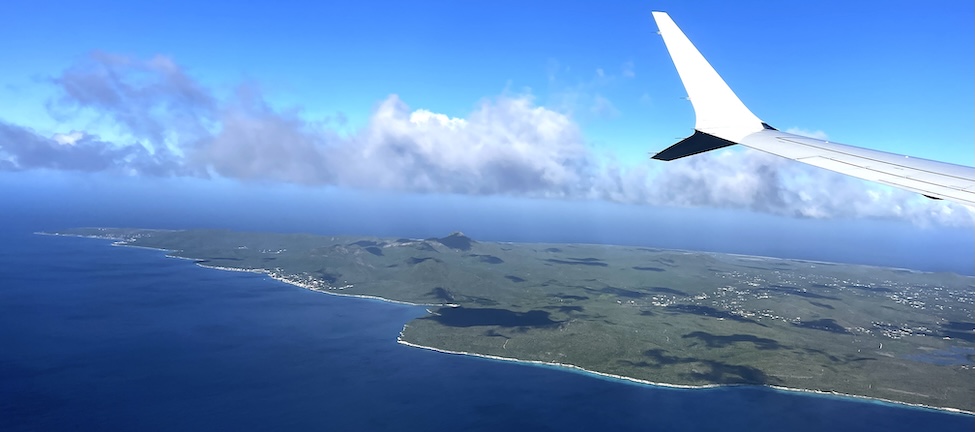
BIRDING
There were birds everywhere. We saw them in the hotel’s restaurant,
in parks, on the beaches, in the patio of our apartment, at the airport, on city streets...
Most frequent were the Bananaquits (Sugar-thieves) and Tropical Mockingbirds.
Venezuelan Tropials were not shy about showing up if food was involved. We even saw
a surprising (to us) number of Crested Caracaras while driving along the roads.
Because we'd visited Aruba and Bonaire before, we expected many of the birds to be familiar.
And that was true.
The only new species that I saw was the Rufus-collared Sparrow.
Other Caribbean species that we saw included
Bananaquits, Tropical Mockingbirds, Bared-eyed Pigeons,
Common Ground Doves, Eared Doves, Venezuelan Tropials, Crested Caracaras, Yellow Orioles,
Flamingos , Brown-throated Parakeets, Tri-colored Herons, Brown Pelicans, Carib Grackle,
and Safron Finches.
Vacationing North American birds included Kestrels, a Great blue Heron, a Great Egret,
an Osprey, a Spotted Sandpipper, a Yellow-crowned Night-heron, a Belted Kingfisher,
a Yellow Warbler, and Greater Yellowlegs.
I also saw Hummingbirds, but not well enough to identify their species, and
the ubiquitous Pigeons.
Rufus-collared Sparrow, seen scrounging food at the beach
|
A Flamingo flock in a rare fresh-water pond
|
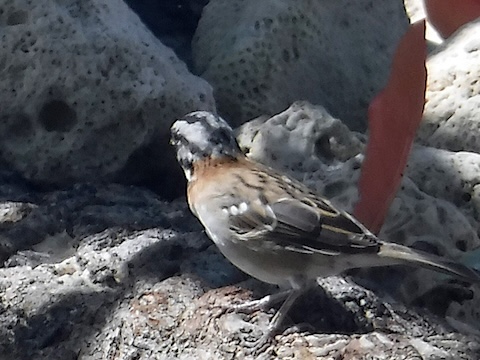
|
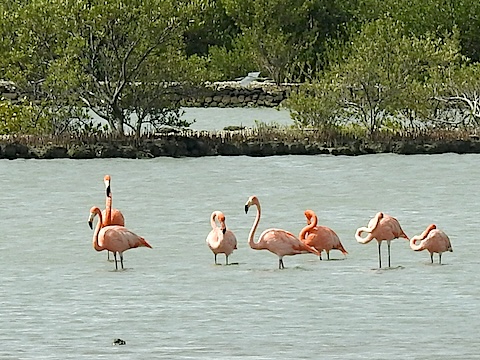
|
A Bared-eyed Pigeon seen from the restaurant
|
Venezuelan Tropial lurking above the beach
|
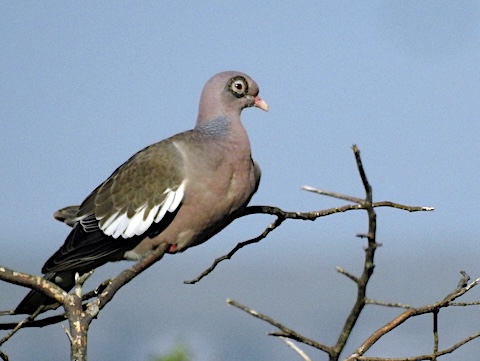
|
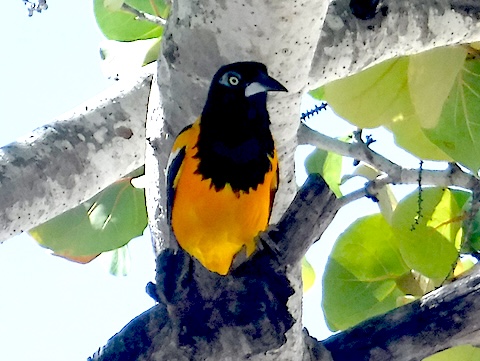
|
SOUTHERN STARS
|
|
Typical night sky looking south from Tropichill
|
|
At 12 degrees north, Curaçao is close to the equator. At night, Orion was
nearly directly overhead and the bright southern star Canopus could be seen above
the southern horizon.
Our apartment at Tropichill was on a hill which is good for sky gazing.
But it was surrounded by the lights of the village - street lights and
yard lights - and by trees and shrubs. In addition, clouds often appeared
after sunset. Those conditions made it less astronomer-friendly.
Nonetheless, the stars directly overhead appeared very bright.
Peter, our host, suggested driving about 5 kilometers
west on Kamida Próspero "Popo" Rojer to where there were no street lights.
When driving along that road in the daytime, I did not see any good
spots to park and spend time looking at stars so I never tried his suggestion.
One evening the power went out all over town for an hour. I went out to see the stars but
it was overcast.
Peter let us use an indoor patio that had walls on three sides, which kept
out some of the unwanted light.
There I took these photos of the sky with my iPhone.
|
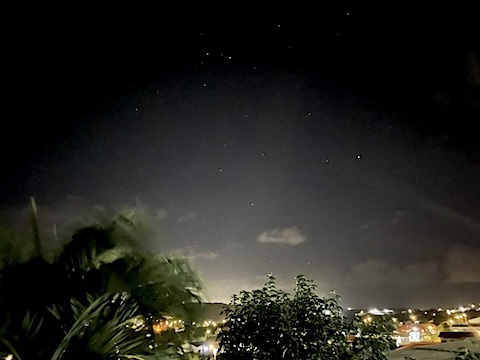
|
A slice of the sky from Jupiter and Taurus at the top
to Sirius and Canis Major at the bottom
|
A slice of southern sky, Sirius and Canis Major at the left,
Canopus at the bottom right, and Columba, the Dove, in the center
|
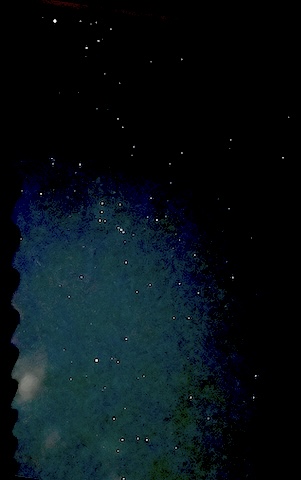
|
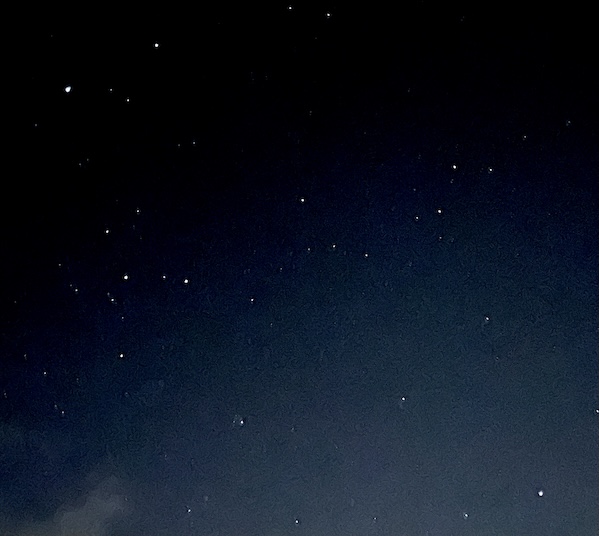
|
To see maps of these stars and constellations and larger versions of the photographs,
click here.
TRANSPORTATION SNAFUS
We had two problems with a rental car from Dollar, which is a subsidiary of Hertz.
First, Dollar did not have a car for us when we arrived.
Fortunately, it was less than a kilometer to our hotel, but the taxi cost $20.
The next morning, after breakfast, we visited the Hertz/Dollar office and they did
manage to produce a car,
a Kia i10, for us.
Second, just six days after we got the car, the keyless entry fob failed
to unlock the car doors after we snorkeled at Playa Kleine Knip.
The key alone opened the car door but also set off an alarm,
which no one at the beach paid attention to.
The key also failed to start the engine, but set off the alarm again.
The car’s manual gave a procedure for starting the car without the keyless entry fob,
but that failed.
Seeking help, I spent a half hour calling the phone numbers for Dollar on our rental agreement
but no one answered.
Eventually, another driver, from Quebec, saw my problem and diagnosed it as a dead battery
in the fob. We pried open both of our fobs,
I put his battery in mine and unlocked my car.
I returned his battery to him and drove
straight to the Sunshine Mart where Gail purchased a new 2032 battery
for the fob for our car.
Everything worked fine after that.
My own fault, but when we started our second swim at Playa Porto Mari
on the second to last full day of our vacation, I felt
something in the pocket of my trunks. It was our car keys, all wet!
Gail returned them to our bags on shore. By the time we’d finished
snorkeling and eating lunch, the key and fob had dried out.
The fob worked and the car started! Hooray!
I chose to fly from Baltimore to Curaçao via American Airlines and a
transfer in Miami because it let us sleep later in the morning of departure.
I suppose everyone else in the world knows what a hassle it is to enter the U.S.A, at
the Miami airport. We missed that information.
It was a long journey from our arrival gate to passport control and then on to
pick up our checked bags from the carrousel.
Then, another long journey with our heavy checked bags, my heavy carry-on,
and the bag with two bottles of booze from Curaçao’s duty-free shop.
These long journeys put us out into the public departure area where we got our checked bags
onto the conveyor belt to be delivered to our next plane.
And then we lined up for the TSA security check again!
I put everything I carried onto the scanning conveyor belt and walked through the
metal detector.
That’s when I realized that the two quarts of booze in my duty-free bag
exceeded the 3-ounce TSA limit by a large margin.
The TSA inspector took the booze bottles aside, inspected them closely, and, then, smiling,
handed them back to me. Whew! And we were off to Baltimore and home.
On our American Airlines flight
|
Gail with our little rental car at Hato Cave
|
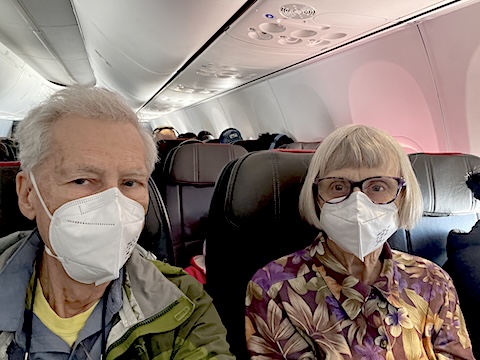
|
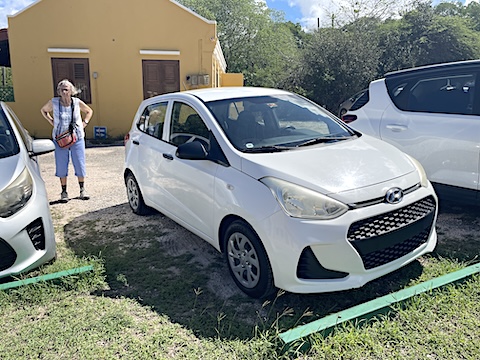
|
CONCLUSION
Our visit to Curaçao wasn’t as smooth as we hoped, but we did enjoy ourselves.
We found that we were still able to snorkel after not doing it for five years and
after aging the same five years.
We also saw Caribbean birds, ate local cuisine, learned a little about the history,
and saw and photographed a few southern stars.
I took 632 photographs and videos.
Once we had our lodging arranged, there were no major problems.
Everyone spoke English, and several other languages.
All the businesses accepted American dollars.
The only business that did not accept a credit card was the gas station nearest the airport.
We did not visit every place that sounded interesting and there were places
we did visit where we could have
spent more time. All vacations are like that.
But we were glad to get home, especially since we both came down with colds when we returned.
It would have been no fun to be sick while on vacation.
POTPOURRI
Responsible: Albert Holm
Created: 13 February 2025, updated 22 February 2025
|
